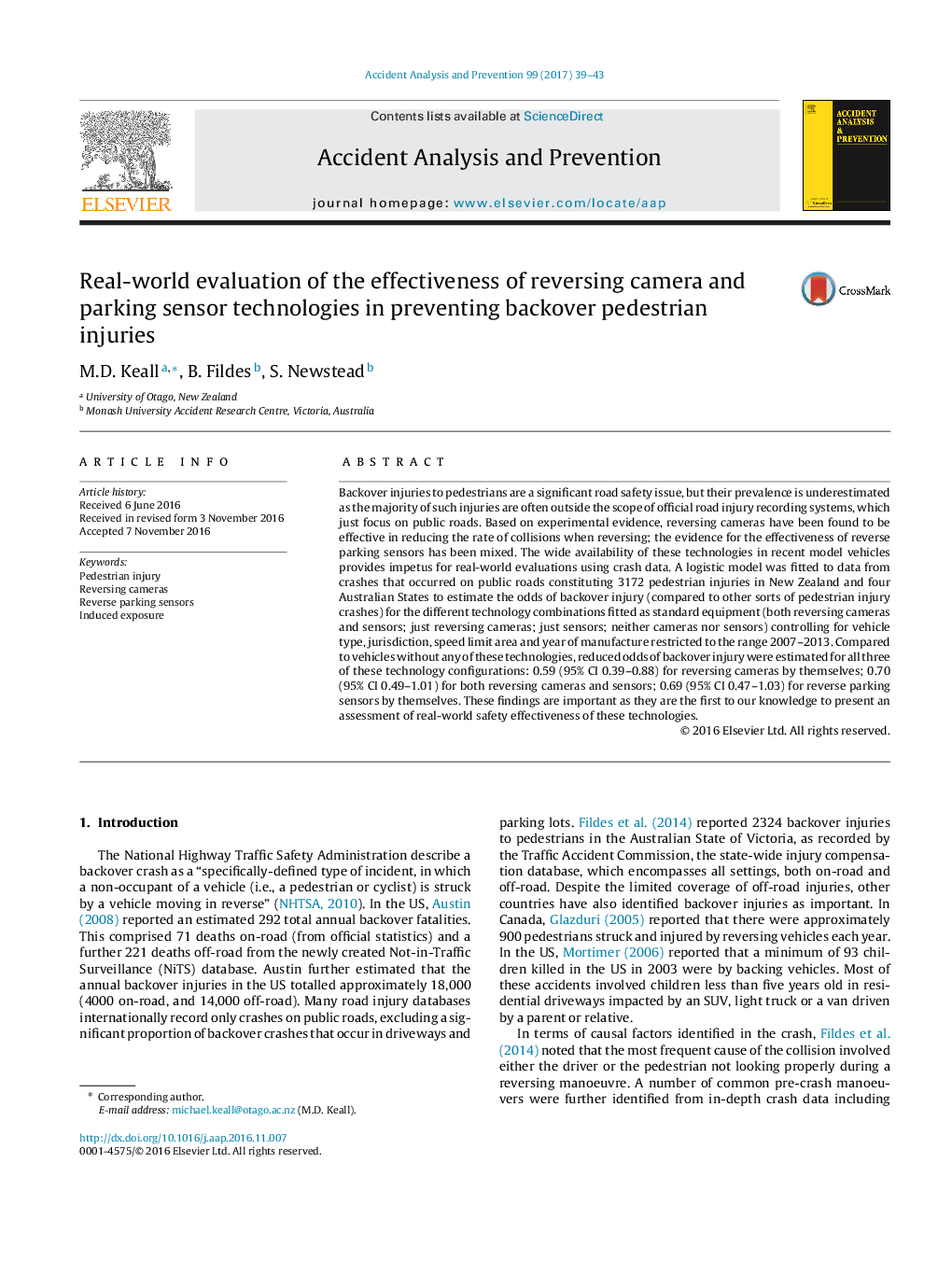| Article ID | Journal | Published Year | Pages | File Type |
|---|---|---|---|---|
| 4978860 | Accident Analysis & Prevention | 2017 | 5 Pages |
Abstract
Backover injuries to pedestrians are a significant road safety issue, but their prevalence is underestimated as the majority of such injuries are often outside the scope of official road injury recording systems, which just focus on public roads. Based on experimental evidence, reversing cameras have been found to be effective in reducing the rate of collisions when reversing; the evidence for the effectiveness of reverse parking sensors has been mixed. The wide availability of these technologies in recent model vehicles provides impetus for real-world evaluations using crash data. A logistic model was fitted to data from crashes that occurred on public roads constituting 3172 pedestrian injuries in New Zealand and four Australian States to estimate the odds of backover injury (compared to other sorts of pedestrian injury crashes) for the different technology combinations fitted as standard equipment (both reversing cameras and sensors; just reversing cameras; just sensors; neither cameras nor sensors) controlling for vehicle type, jurisdiction, speed limit area and year of manufacture restricted to the range 2007-2013. Compared to vehicles without any of these technologies, reduced odds of backover injury were estimated for all three of these technology configurations: 0.59 (95% CI 0.39-0.88) for reversing cameras by themselves; 0.70 (95% CI 0.49-1.01) for both reversing cameras and sensors; 0.69 (95% CI 0.47-1.03) for reverse parking sensors by themselves. These findings are important as they are the first to our knowledge to present an assessment of real-world safety effectiveness of these technologies.
Keywords
Related Topics
Physical Sciences and Engineering
Chemical Engineering
Chemical Health and Safety
Authors
M.D. Keall, B. Fildes, S. Newstead,
